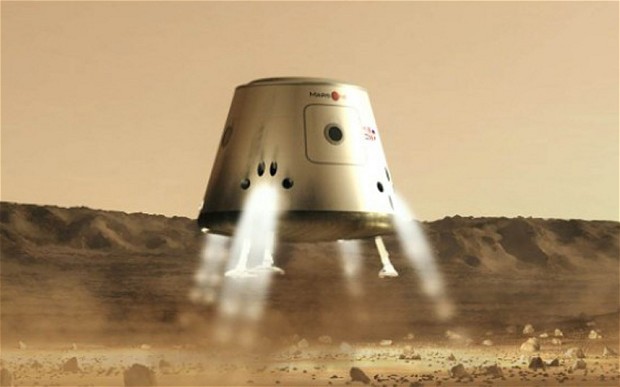Mars One, that promised interplanetary Truman Show, has always looked like a longshot, a seeming space fugazi. For the uninitiated, the plan, hatched in Holland by entrepreneur Bas Lansdorp, is to send a quartet of Earthlings to our neighboring orb in 2025 on a one-way mission, and to largely sponsor it with a reality TV show, a Big Brother from another planet. I’d be shocked it it ever gets off the ground. From “All Dressed Up For Mars and Nowhere to Go,” a Matter article by the remarkably named Elmo Keep which focuses on an Australian would-be astronaut, an aspiring Armstrong who’s been shortlisted for a ticket to the unknown:
“Despite not being a space-faring agency, it claims that by 2025 it will send four colonists to the planet. Ultimately, it says, there will be at least six groups of four, a mix of men and women, who will train on Earth for 10 years until they are ready to be shot into space strapped to a rocket, never to return.
It estimates the mission will cost only about $6 billion, tens if not hundreds of billions less than any manned Mars mission so far proposed by NASA. Mars One openly admits that it is ‘not an aerospace company and will not manufacture mission hardware. All equipment will be developed by third-party suppliers and integrated in established facilities.’ That’s how it will keep costs down, by outsourcing everything to private enterprise.
It is, essentially, a marketing campaign with two goals: first, to raise enough interest among the global community in a manned Mars mission so that crowd-funding and advertising revenues will be generated to the tune of billions of dollars; and, second, to use this money — largely to be raised through a reality television series documenting the training process and journey to Mars from Earth — to pay for the mission itself.
The mission is open to anyone in the world who wants to volunteer. These people don’t have to have any special qualifications whatsoever; they need only be in robust physical and mental health and willing to undertake the mission at their own risk. As the proposed program progresses, they will have to prove themselves adept and nimble learners, able to amass an enormous amount of new practical knowledge, not only in the high-pressure intricacies of spaceflight, but in learning how to perform rudimentary surgery and dentistry, how to recycle resources, how to take commands, and maintain a harmonious team dynamic for the rest of their natural lives.
Two hundred thousand applicants would seem to suggest that the plan has solid legs — a staggering number of people willing to sacrifice their lives on Earth to take part in an open-source, crowd-powered, corporately sponsored mission into deep space. A huge amount of interest in this endeavor clearly demonstrated right off the bat.
If only any of it were true.”


